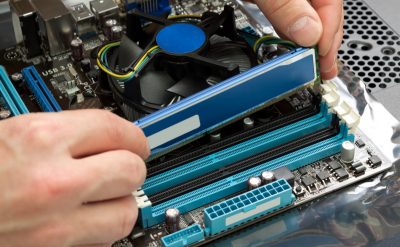The infrastructure landscape has never been as vigorous as it is today, having moved from the domain of utilities and public service providers to the focus of policy dialogues. Multiple factors are driving the future of infrastructure, such as the arrival of new technologies, fading of industrial barriers, poor consumer behavior, changing nature of work, and thrust on development. In the changing scenario, the roles of infrastructure stakeholders are also changing as a different approach needs to be adopted for providing infrastructure and services based on the needs of the new times.
But did you ever wonder of a corporate scenario without a robust IT infrastructure? Do you think a growing business environment can sustain without it?
Importance of IT infrastructure
An employee might undervalue instant access to software and technologies, but a company can’t. Several start-ups aren’t technology-based and have basic hardware like desktops, laptops, router, and a simple phone system. Client delivery and communication takes place through cloud applications such as Dropbox, Evernote, or Google Apps. And, as the company grows, issues related to security, connectivity, and productivity are questioned wherein the company needs to adapt to the security implications and strong connectivity throughout. Also, there are things like system disruptions and security breaches that need to be handled. Therefore, a strategic and robust IT infrastructure is vital.
Smart investments in hardware, software, network devices, and dedicated teams make a positive difference that helps distinguish between a successful company and a failure. It improves the cross-functional and interpersonal communication and exchange of information between the organizations. Subsequently, a strong IT infrastructure helps in improving the user experience, keeps productivity flowing, and reduces costs.
IT infrastructure trends
Gartner’s look at top infrastructure and operational trends reflects an offshoot of technologies – such as cloud computing, automation, and network advances. The company’s analysts have talked about these technologies many times before.
Listed below are the top five IT infrastructure trends impacting operations and infrastructure.
Automation
It has been a vital element for some companies for the past few years. But the deployment and development of Automation are becoming confusing. The amount and type of different automation techniques need to be managed. It requires a shift in the team’s development approach, led by an automation architect, which can be standardized across the units. By 2025, there will be more than 90% percent of enterprises that will have an automation architect.
Scaling of DevOps agility
IT’s role in many companies has almost become similar to that of product managers in different DevOps teams. IT should build up consistency across the organization because managers don’t want islands of DevOps teams across the company. And if the self-service platform approach is not adopted, 90% of enterprises will fail to scale the DevOps initiative. No code or low code development is a concrete example of the self-service platform approach.
Distribution of cloud
The ways and methods of putting cloud or cloud-like services on-premises while letting a vendor manage it are increasing. AWS and Athos will soon roll out Outposts, making the environment change a lot in the next few years. From the enterprises’ end, they should be prepared to set boundaries while determining which service is ready to set boundaries for software upgrades, performance, and patching.
Immersive experience
Previously, humans used to learn and adapt to technology, and now, the technology learns and adapts to humans. At present, developing new applications now and then that adhere to user expectations, we have reached a point where customers expect nothing less than perfect. These systems are good for online reputation and market share, but as soon as one glitch is discovered, they will be out.
Hybrid IT for disaster recovery
Hybrid IT is a mix of SaaS, PaaS, branch offices, edge computing, and security services, and they all together make it difficult for backing up enterprise resources. Also, the simple IT disaster recovery plans may deliver only partial success. By 2021, the root cause of maximum cloud-based availability issues will be to use cloud service provider native redundancy capabilities fully. Therefore, enterprises need to leverage automation investment and other IT tools to refocus on systems.
Maximizing productivity is another major concern when it is about automating IT and cloud infrastructure. It is recommended to see that the tool contains some of the required properties such as productivity, budget, support structure, troubleshooting, and consistency with requirements.
Top IT infrastructure automation tools
Currently, there are five top IT infrastructure automation tools in the industry that have been extremely effective. They have a history of helping organizations build up in IT/Cloud infrastructure.
So, there are tons of emerging IT infra trends and automation tools out there. To name a few, mesh, secure, access service edge, network automation, network-on-demand service, and firewall as a service are majorly seen as a part of IT infra. “After decades of focusing on network performance and availability, future network innovation will target operational simplicity, automation, reliability, and flexible business models,” David Cappuccio (Distinguished Analyst) said. We conclude on the saying of Cappuccio that enterprises need to automate everywhere and balance what technologies are safe vs. what is agile.













